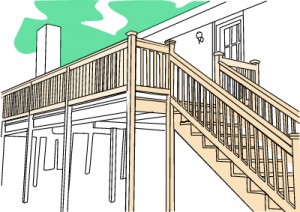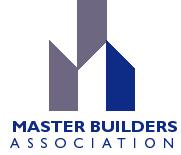Balustrades & Handrail Requirements – The Building Code of Australia
Posted by John C on in Uncategorized | Comments Off on Balustrades & Handrail Requirements – The Building Code of AustraliaBalustrades, Handrails & Stairs
There is a balustrade an upright up stand which shields users of a building next to a perpendicular displacement between flat building surfaces or in the side of a stair. Balustrading is required be stiff enough to resist applied pressure and to obey the BCA. Balustrade could have a handrail over.
To stop individuals from falling, a constant balustrade or obstacle should be supplied alongside any staircase or
ramp, any flooring, corridor, hall, balcony, verandah, mezzanine or trail of entry to a building if it isn’t bounded by a wall or some level more than one m above adjoining flooring or finished ground level. It’s vital that you be aware the measurement of the height of obstacle or the balustrade is from the finished flooring surface. Finishes such as carpeting and ceramic tiles can make an important difference to the finished floor height.
The Height of Obstacle or a Balustrade ustn’t be Less Than
- A transition zone could be included where the obstacle or balustrade height changes from
- 865mm in ramp or the stair flight to 1m in the landing.
To Comply with Requirements of Acceptable Building Training Stairs must not Have
- So that people can rest more than 18 risers in a flight of steps to make sure that they manage a limited amount of measures before a landing is installed
- 1:8 should not be exceeded by the most gradient of a ramp and the flooring surface must be non slip.
Obstacles or balustrades ought to be built such that a man cannot fall over or through them while at the exact same time limiting a kid crawling through them. Openings in obstacles or balustrades should be built so that any opening doesn’t allow a 125mm sphere to pass through it where above the nosing line this space is examined for stairs.
A barrier ought to be powerful enough to resist failure should a man fall or lean against it. A balustrade or obstacle has to be made to take loading forces in accordance with AS 1170.1 which demands that a balustrade or obstacle should be structurally sufficient to resist a point load of 0.6kN and an equally distributed load of 0.4kN used inward, external, or down on the handrail. These design loads are meant to make sure that the obstacle is stiff enough to resist a man falling against it without failing (point load) and stiff and powerful enough not to fall should individuals lean against the obstacle (distributed load). The handrail also has to have the ability to resist wind loads especially where there is a solid panel used.
In wetness or weather exposed infil, handrails, posts, newels, balusters and uses should be naturally long-lasting Class1 or Class2 lumber species including ironbark, spotted gum, blackbutt, jarrah, merbau, or kwila with any sapwood present. Instead, preservative ought to be treated to higher or H3 standard and should comply with AS 1604. Ideally, the lumber be straight and ought to be free of any important strength reducing characteristics.
All metal connectors including mounts, screws, bolts and nails ought to be at least hot or for Class 3 corrosion resistance screws, as per AS3566. For coastal settings subject to airborne salts deposit, equal corrosion resistance alloy connections or stainless steel ought to be utilized.
Nail holes ought to be stopped with outdoor grade wood filler. Some loose stuff or soil ought to be removed ahead of coating. Two closing top coats of exterior paint or stain should subsequently be used in accordance with manufacturer’s recommendations.
For floorings more than 4m above ground, any flat components within the balustrade or obstacle between 150mm and 760mm above flooring should never ease scaling. To keep this from happening the balustrade be a solid panel obstacle or should have vertical members spaced no more in relation to the maximum opening.
Handrail and Barrier Heights mustn’t be Less Than
-
1m over the ground entrance trail, balcony or landing
-
A transition zone could be included where the obstacle or balustrade height changes from 865mm in the stair flight or ramp to 1m in the landing
-
Posts should be spaced at 1.8m
-
Wire has to be stainless steel using a minimal diameter of 3.2mm
-
Intermediate droppers must be matched at a maximum 9oomm between posts and guaranteed top and underside
-
Tensioners can be set at every change of direction of 30 degrees or more on each strand of wire
-
A stable handrail is needed of steel tube using a minimal diameter of 40mm or lumber in accordance with the Timber framing Code AS 1684.2 1999.
read more







